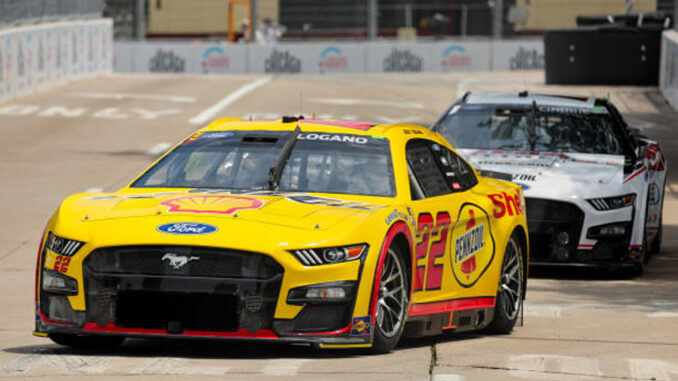
The hallmark of the Next-Gen car on the road course has been aggression. A tougher, stronger car means it’s less fragile and can keep racing despite contact, but it also welcomes aggressive pushes, especially at road course restarts.
That was especially true earlier this year at Circuit of The Americas, a sort of racing that Kyle Busch says is “embarrassing” for the sport.
But plenty of drivers expect the aggression to continue in the sharp corners and tight confines of the Chicago Street Circuit.
“You’re going to have to be aggressive here,” said Ricky Stenhouse. “There’s a handful of braking zones where you can get some passes in, but it’s going to be tough. A lot of people are close on speed, which makes it harder to pass.”
“So you’re going to have to wait for a mistake by somebody, the tires to get a little older, and then try and outbrake them in certain corners,” he added.
“Aggression is part of our racing and our culture,” according to Michael McDowell.
“Where you draw the line is… getting booted out of the way is not okay, but there’s going to be accidental contact, that’s just going to happen as people checkup,” he concluded.
Other drivers are more concerned with not making anyone else angry, like Australian Supercars driver Shane van Gisbergen, who will start in third.
“I have to be respectful of everyone,” van Gisbergen said. “Everyone’s trying to get into the [Playoffs] and race for a championship, but I want to be here and do well. In Australia we have rules on what we can do: we can’t just crash each other into the fence. I’m going to be respectful and hopefully everyone’s nice to me too.”
Alex Bowman sees it as a matter of principle.
“I unintentionally crashed Denny at Martinsville, and that still bothers me that I crashed a guy for a win, that’s not how I race. So if somebody does that on purpose, they’ve got to live with that,” he said.
Ryan Blaney is especially optimistic, expecting more cooperation from the drivers.
“We all understand, like, let’s just get through the first half-a-lap on restarts and then sort everything out.” “Just have to be mindful of the stacks, kind of typical of tight short road course racing.”
On the topic of restarts, Christopher Bell thinks that they’ll shape the intensity of the race.
“Come the end of the race – if it stays green and everyone’s spread out, I think we’re going to be fine,” he said. “But if it gets to a point where we have yellows and green-white-checkers and Overtimes, we’re going to be tearing some stuff up.”
Kyle Busch noted that the drivers intentionally asked for the restart zone to be moved further back in the track, right before a corner and hard braking zone, but he says he still has “no idea” what to expect.
“The reason why we asked for it to be in [Turn] 12 is so you actually speed-up-slow-down right away to create a little bit of separation rather than just have everybody right on the gas. So you’re going to get a little separation but you’re not going to get a lot. So that’s going to be a big deal getting into Turn 1, and it all happens there.”
Polesitter Denny Hamlin added:
“Trust me, it’s still going to be crazy into turn one but it’s just going to hopefully take us from not being bozos. That’s the goal,” he said.
“It still may happen, but I certainly think that you don’t really want to play a whole lot of games when it comes to that because it’s not good for anyone. It really isn’t,” Hamlin added. “A lot of the responsibility will come from the second, third and fourth rows to really try not to anticipate or jump the start. You have to make a corner there. I think it’s placed probably in one of the best spots that it could to avoid what we’ve been doing lately.”
- Denny does Dover after surviving hard-charging Kyle Larson to tame the Monster - April 28, 2024
- The Monster Mile brings short track style to high banking - April 25, 2024
- Sam Mayer scores Xfinity win by an inch in photo finish at Texas - April 13, 2024